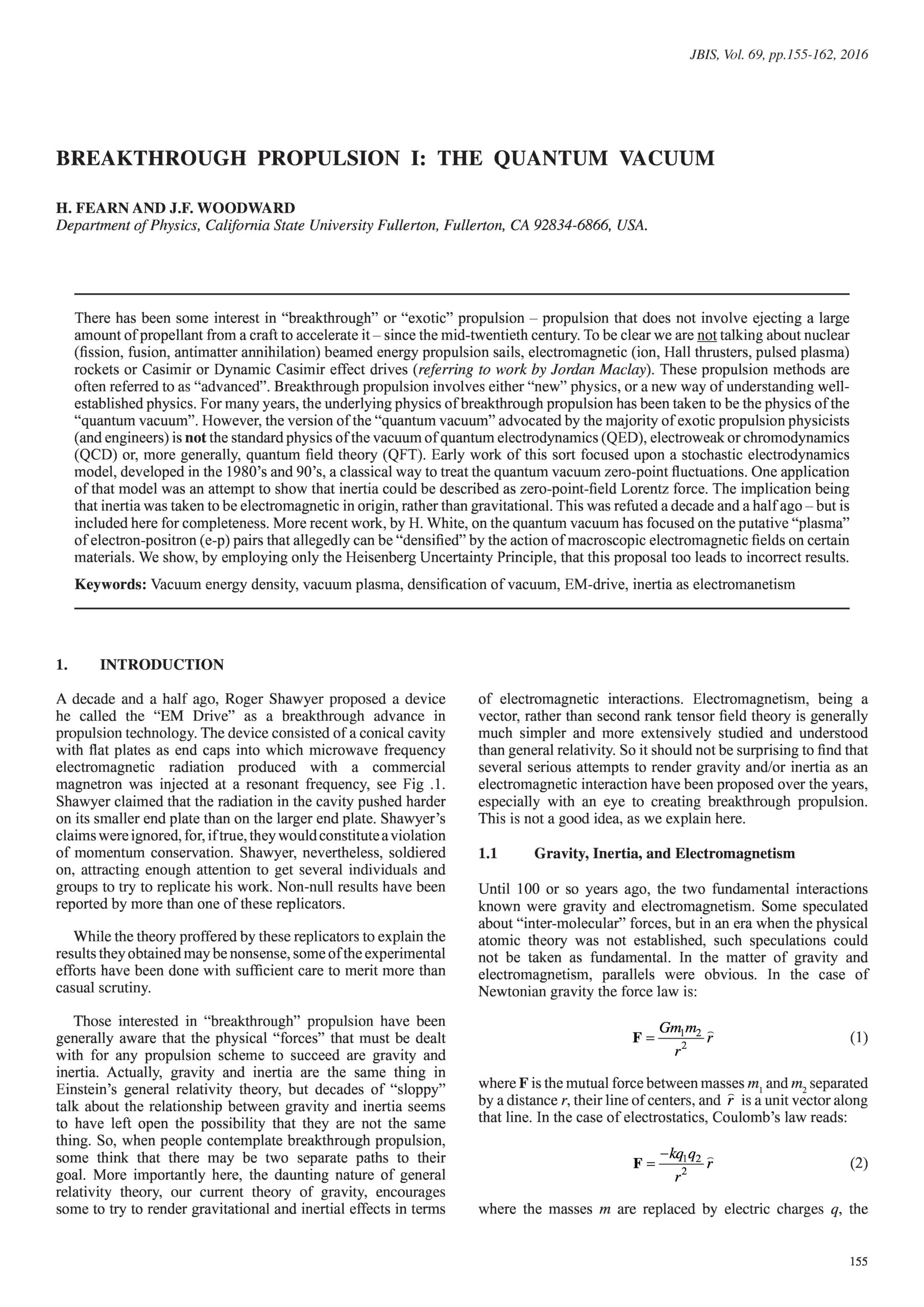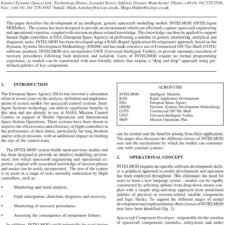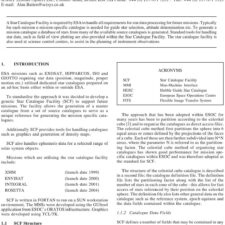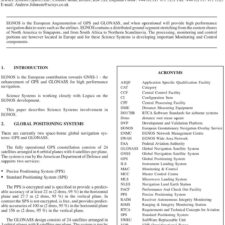Breakthrough Propulsion I: The Quantum Vacuum
£5.00
H. Fearn et al (2016), JBIS, 69, pp.155-162
Refcode: 2016.69.155
Keywords: Vacuum energy density, Vacuum plasma, Densification of vacuum, EM-drive, Inertia as electromanetism
Abstract:
There has been some interest in “breakthrough” or “exotic” propulsion – propulsion that does not involve ejecting a large amount of propellant from a craft to accelerate it – since the mid-twentieth century. To be clear we are not talking about nuclear (fission, fusion, antimatter annihilation) beamed energy propulsion sails, electromagnetic (ion, Hall thrusters, pulsed plasma) rockets or Casimir or Dynamic Casimir effect drives (referring to work by Jordan Maclay). These propulsion methods are often referred to as “advanced”. Breakthrough propulsion involves either “new” physics, or a new way of understanding well-established physics. For many years, the underlying physics of breakthrough propulsion has been taken to be the physics of the “quantum vacuum”. However, the version of the “quantum vacuum” advocated by the majority of exotic propulsion physicists (and engineers) is not the standard physics of the vacuum of quantum electrodynamics (QED), electroweak or chromodynamics (QCD) or, more generally, quantum field theory (QFT). Early work of this sort focused upon a stochastic electrodynamics model, developed in the 1980’s and 90’s, a classical way to treat the quantum vacuum zero-point fluctuations. One application of that model was an attempt to show that inertia could be described as zero-point-field Lorentz force. The implication being that inertia was taken to be electromagnetic in origin, rather than gravitational. This was refuted a decade and a half ago – but is included here for completeness. More recent work, by H. White, on the quantum vacuum has focused on the putative “plasma” of electron-positron (e-p) pairs that allegedly can be “densified” by the action of macroscopic electromagnetic fields on certain materials. We show, by employing only the Heisenberg Uncertainty Principle, that this proposal too leads to incorrect results.





